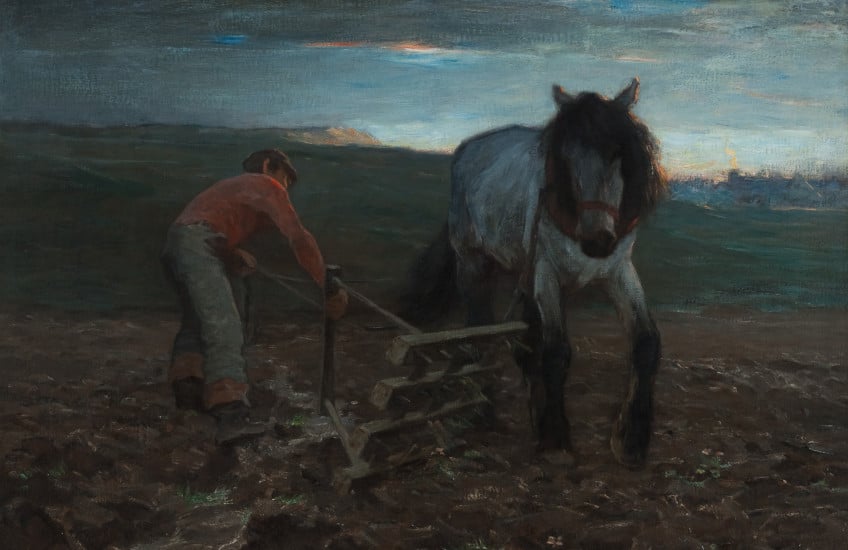
>> During the 19th Century, there was a growing interest in works of art that depicted scenes of everyday life. Since Horatio Walker’s Turning the Harrow-Early Morning presents a scene of a young man tilling the soil at dawn, we asked local farmer Charles Summers to take us through the process of harrowing. He shares his views and impressions of this painting based upon his own experience of farming the land.
>> Harrowing is a form of tillage, and tillage is when you work the soil. You would call it a form of secondary tillage. Primary tillage would be like ploughing or turning over land, and of breaking sod, whatever you want to call it. Harrowing is generally done to make a finer seedbed, kill weeds, prepare land for sowing. It’s relatively easy work, unskilled work. This type of job that this guy is doing in the painting, a boy would do that type of job. It’s not as precise. It’s not the job of ploughman, which would have been a man’s profession, like for adults and a very — more esteemed in the hierarchy of, you know, rural skills. These harrows and stuff are [laughs] — I’ve never used a wooden one. I have old sets of diamond drag harrows, you would call it. They’re basically the same. The spike tooth harrow. And they’re awkward because they do want to tend to flip when the horse turns sharp as he’s doing here. And from an agricultural or a farmer’s perspective, you have to look at this gentleman and feel sorry for him to a certain extent. Just having done this type of work and I — it is truly toil. And this is a very — obviously a strain. It doesn’t actually look like it’s going well necessarily, although, you always have to — you have to turn at end of the field, of course. This poor guy is also obviously out at the break of dawn here because you had to — when you’re going over a field three feet at a time, you have to put in a very long day. And that’s a long day for him and a long day for that animal, too. I mean, I guess he was looking to show something on the farm which was nostalgic. And there’s a magical quality to horses. So it’s easy to get like overly romantic or sort of to glamorize that beauty and that power. And then instead what he has here is very humble, very small and quiet. You know, this isn’t the Budweiser Clydesdales. This isn’t like 30 horses pulling a combine on a hill in Oregon or anything. It’s a very — this could be anywhere in the world at any time over the last, you know, 4,000 years. This is base level existence actually, this level of technology. And it’s very lonely, obviously. And I think that’s what sort of surprises me about this because I think when you look at nostalgia for the old ways in agriculture, a big part of that is because it was always like a community undertaking. You really couldn’t do everything by yourself. Not that you can today either, but there was a very like real family and community element. And instead here, we have one boy probably and his, you know, his nag of a horse, you know. And so it’s very humble, very plain.